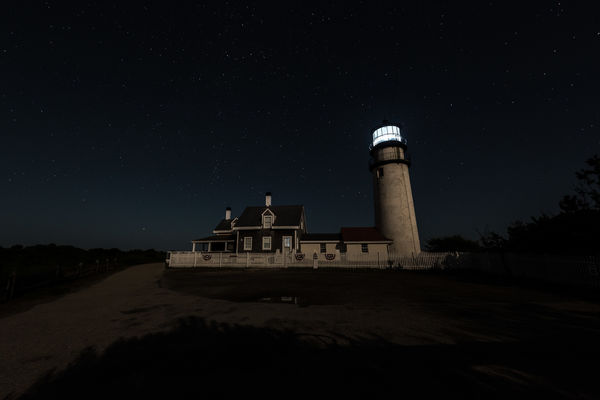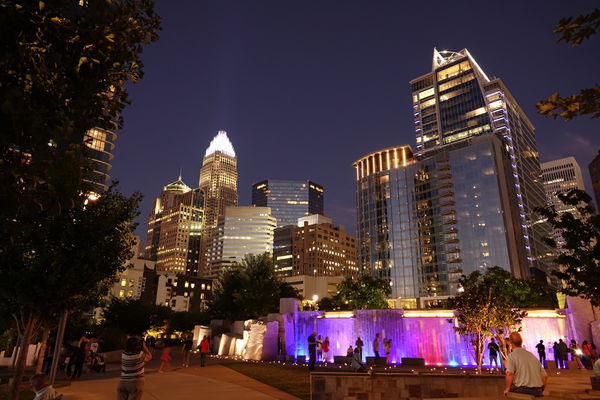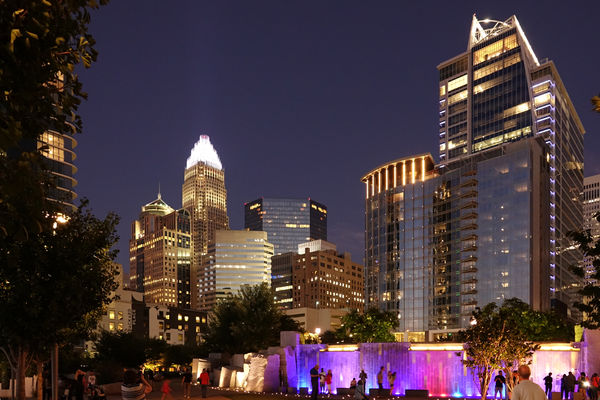Tilting wall/buildings
Sep 24, 2017 17:35:19 #
Charles 46277 wrote:
One of the most important differences between the ... (show quote)
I would think that natural perspective would have to be really bothersome for someone to lug a view camera around and go through the develop-scan process for each image.
Sep 24, 2017 18:00:20 #
You can get shift adapters for most mirrorless cameras to use with standard lenses. These will give some degree of perspective control on camera. I think they work best with M4/3 cameras. Fotodiox have them for a variety of cameras and lens mounts. I think one be my next purchase. I'll post how it turns out.
Sep 24, 2017 18:14:12 #
Charles 46277 wrote:
One of the most important differences between the ... (show quote)
A quick look on ebay found this for pentax
http://www.ebay.co.uk/itm/Pentax-DSLR-Digital-Back-Adapter-For-4x5-Large-Format-Camera-K50-K20D-K7-K5-K3-/282090424093?hash=item41ade6471d:g:yx0AAOSwvTBZp39a
This adapter allows you use all Pentax digital camera(PK mount) to adapt on a 4x5" large format camera, moveable designed to allow you to shoot 5 images horizontal and combine as a panorama image by software, made by professional large format manufacturer-Shen Hao, quality is grurenteed!
hmm so it's $200 for that + the camera ...
Sep 24, 2017 19:26:49 #
dyximan wrote:
My question is when taking a cityscape with A cro... (show quote)
A tilt shift lens is the better solution. But to my knowledge, there are no T/S lenses specifically for crop sensor cameras. The ones out there will work, but the crop effect will limit your angle of view.
DXO Viewpoint III is the best software I've seen to correct this in post processing, though the keystone correction in Adobe software is pretty good. However, when you have a really bad case of keystoning, you will lose a lot of your image area (in total pixels) and along with it some image quality.
I rarely use software correction, preferring to use my T/S lenses. However sometimes you gotta do what you gotta do.
I needed to use a 14mm for this, and had to tilt the camera upwards with the intent of cropping later for the composition I was after. I used DXO Viewpoint III to make the correction, since Lr was unable to fully correct. Even DXO was taxed to the max on this image, but I was happy with the result.
Sep 24, 2017 19:36:17 #
Charles 46277 wrote:
One of the most important differences between the ... (show quote)
If you use a recessed lensboard a wider angle lens will work. I have one for my 90 mm lens. By the way for those who are not up on different format cameras. A 90mm lens is a wide angle lens on a 4X5 view cameras, a normal lens on a 2 1/4 and a short telephoto on a 35mm camera. Dave
Sep 24, 2017 19:44:52 #
dyximan wrote:
My question is when taking a cityscape with A cro... (show quote)
You can do some correction in post using Lightroom but, as someone else has said, you would need to shoot very wide as you will lose the sides of the image when you correct it. And, as others have said, all 35mm cameras will tilt buildings, and trees, too. You could rent a Lens Baby lens and see if that works or any other tilt shift lens if you are shooting a lot of buildings and must have them straight; renting a lens would help you to determine if buying one is the right choice for you.
Sep 25, 2017 03:05:46 #
Sep 25, 2017 05:51:59 #
Robert Bailey
Loc: Canada
Here is a link to an article from B&H Photo on perspective control (or tilt and shift) lenses.
https://www.bhphotovideo.com/explora/photography/buying-guide/perspective-control-and-tilt-shift-lenses
The last time I looked at prices they were not nearly as expensive as some others have claimed in this thread- about $2,000 or so for a "name brand", and perhaps $600 for a "3rd party" lens.
As someone else has mentioned, there are also adapters that go between the camera body and a lens. These adaptors are usually designed to use a "medium format" lens on a full-frame or APS-C body.
As others have also mentioned, the other options are to buy a large format view camera or else use software such as Adobe Photoshop.
https://www.bhphotovideo.com/explora/photography/buying-guide/perspective-control-and-tilt-shift-lenses
The last time I looked at prices they were not nearly as expensive as some others have claimed in this thread- about $2,000 or so for a "name brand", and perhaps $600 for a "3rd party" lens.
As someone else has mentioned, there are also adapters that go between the camera body and a lens. These adaptors are usually designed to use a "medium format" lens on a full-frame or APS-C body.
As others have also mentioned, the other options are to buy a large format view camera or else use software such as Adobe Photoshop.
Sep 25, 2017 05:59:56 #
Try this to straighten the buildings in a photo. http://www.photographymad.com/pages/view/fixing-the-keystone-effect-using-photoshop
Sep 25, 2017 06:29:08 #
Here is an example of the tilting and the correction I used in Lightroom. This is downtown Charlotte NC with the Bank of America corporate center in the middle.
Sep 25, 2017 06:35:10 #
dyximan wrote:
My question is when taking a cityscape with A cro... (show quote)
It's the angle of the camera, not the sensor, and post processing can fix it, more or less.
Sep 25, 2017 07:10:29 #
jerryc41 wrote:
It's the angle of the camera, not the sensor, and post processing can fix it, more or less.
Isn't the angle of the camera back and the sensor the same?
J. R.
Sep 25, 2017 07:53:03 #
Sep 25, 2017 07:55:54 #
great illustration of correcting to need. Biggest idea from all these suggestions is get as high as you can to get the perspective you desire.
Third of fourth floor of a close by building or even a roof top available space will do the best for you then perspective adjustments in the camera and or post shooting.
Keep it straight.
Third of fourth floor of a close by building or even a roof top available space will do the best for you then perspective adjustments in the camera and or post shooting.
Keep it straight.
Sep 25, 2017 07:56:51 #
If you want to reply, then register here. Registration is free and your account is created instantly, so you can post right away.













